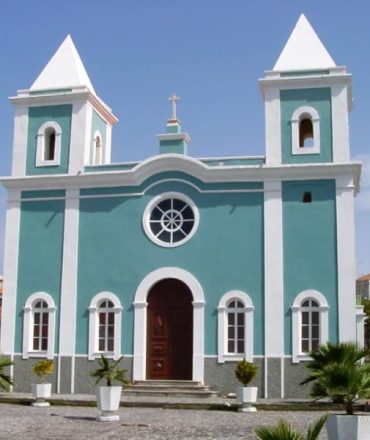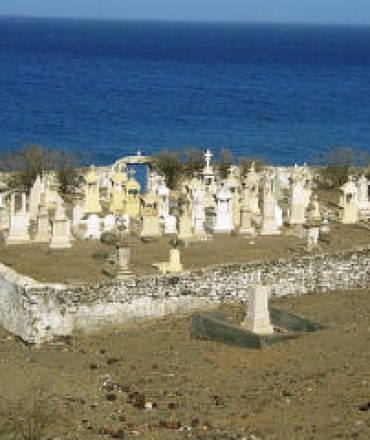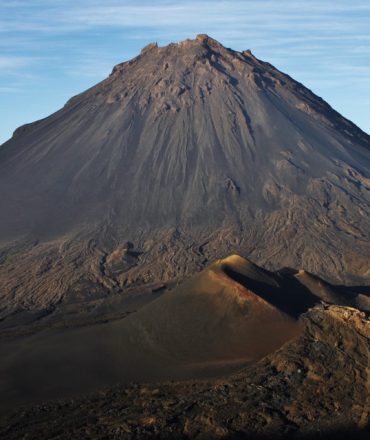Hey there, adventure seekers! 👋 Ready to embark on a journey that’ll literally rock your world? Welcome to Fogo Island, Cape Verde’s hidden gem that’s about to blow your mind (but don’t worry, not literally… well, mostly). Let’s dive into what makes this volcanic paradise a must-visit destination!
What makes Fogo Island unique among the Cape Verde archipelago?
Ever dreamed of standing on the edge of an active volcano? Or sipping wine grown in volcanic soil? Well, pinch yourself, because Fogo Island is about to make those dreams come true!
The active Pico do Fogo volcano
Picture this: you’re standing at the base of a massive volcano, its peak disappearing into the clouds. That’s Pico do Fogo, Cape Verde’s highest point and Fogo’s crowning glory. Rising to an impressive 2,829 meters (9,281 feet), this active stratovolcano is the island’s raison d’être and a geological marvel that’ll leave you slack-jawed.
But Pico do Fogo isn’t just a pretty face. Its most recent eruption in 2014-2015 reshaped the landscape, creating new lava fields and reminding everyone of nature’s raw power. The volcano’s flanks are a patchwork of old and new lava flows, each telling a story of past eruptions. As you explore, you’ll see firsthand how this fiery giant has shaped not just the land, but the very culture and way of life on Fogo.
Rich volcanic soil and fertile landscapes
Who knew volcanoes could be so… delicious? Fogo’s volcanic soil is a fertile playground for agriculture, producing some of the most unique and flavorful crops you’ll ever taste. It’s like Mother Nature decided to turn up the volume on flavor, and boy, did she succeed!
Let’s talk wine, shall we? Fogo’s volcanic vineyards are nothing short of miraculous. Imagine rows of gnarled vines, their roots plunging deep into black volcanic soil, soaking up minerals that give Fogo wine its distinctive character. The star of the show? That’d be Manecom, a robust red wine that’s as bold and unapologetic as the volcano itself. Each sip is like a little explosion of flavor in your mouth – a testament to the island’s fiery heritage.
Unique blend of Portuguese and Cape Verdean culture
From colorful colonial buildings to the rhythm of morna music floating through the air, Fogo is a cultural melting pot that’ll capture your heart. It’s like stepping into a living, breathing postcard of Cape Verdean life!
In São Filipe, the island’s capital, Portuguese colonial architecture stands proud against a backdrop of volcanic hills. Wander through the cobblestone streets, and you’ll feel like you’ve time-traveled to a bygone era. The sobrados, grand two-story houses with distinctive wooden balconies, are a photographer’s dream. Each building tells a story of the island’s colonial past, with a distinctly Cape Verdean twist.
How can I get to Fogo Island?
Alright, let’s get down to brass tacks. How do you turn this volcanic dream into reality? Don’t worry, we’ve got your back!
Flight options to São Filipe Airport
Hop on a quick flight from Praia (Santiago Island) or Sal, and before you know it, you’ll be touching down in São Filipe. It’s like teleporting to another world, but with better in-flight snacks! Flights operate daily, and the journey from Praia takes just about 45 minutes. As you approach the island, keep your eyes peeled for a bird’s-eye view of Pico do Fogo – it’s a preview of the adventure to come!
Ferry connections from other Cape Verde islands
Feeling nautical? Catch a ferry for a scenic ride. It’s the perfect chance to channel your inner seafarer (seasickness pills recommended, just in case). Ferries connect Fogo with Santiago and Brava islands, offering a more leisurely – and adventurous – way to reach the island.
The ferry journey from Praia to São Filipe takes about 3-4 hours, depending on sea conditions. It’s a great option if you’re not in a hurry and want to soak in the vastness of the Atlantic. Plus, there’s something magical about approaching Fogo from the sea, watching the volcanic peak grow larger on the horizon.
Best times to visit Fogo Island
Here’s a little secret: there’s never really a bad time to visit Fogo. But if you’re looking for that Goldilocks “just right” weather, aim for November to April. It’s like the island is giving you a warm hug (literally) with perfect hiking conditions and minimal rain.
During these months, you can expect daytime temperatures around 25°C (77°F), dropping to a comfortable 18°C (64°F) at night. It’s ideal for hiking Pico do Fogo without melting into a puddle of sweat!
What are the must-see attractions in Chã das Caldeiras?
Welcome to the heart of Fogo’s volcanic wonderland! Chã das Caldeiras, nestled within the ancient crater of Fogo, is like stepping onto another planet – one where humans and volcanoes have learned to coexist in a delicate dance.
Exploring the volcanic crater and lava fields
It’s not every day you get to walk on ground that was literally created in your lifetime. The lava fields from recent eruptions are like nature’s own modern art installation – beautiful, awe-inspiring, and a little bit scary.
Picture this: you’re standing on a vast expanse of black, twisted rock, steam still rising from cracks in the earth. The lava fields from the 2014-2015 eruption are a stark reminder of nature’s raw power. As you crunch across the cooled lava, you’ll see fantastic formations – ropey pahoehoe lava that looks like coiled ropes, and jagged a’a lava that’ll test the durability of your hiking boots.
Visiting the resilient villages within the caldera
The people of Chã das Caldeiras give new meaning to the phrase “rising from the ashes.” Their determination to rebuild after each eruption is nothing short of inspirational. It’s a powerful reminder that with the right attitude, you can overcome any obstacle life throws at you (even if that obstacle is molten lava).
Portela and Bangaeira, the two main villages in the caldera, are testament to human resilience. Walking through these communities is like stepping into a living geology lesson. Houses built from volcanic rock stand next to newer structures, each telling a story of destruction and rebirth.
Wine tasting and local agriculture tours
From vineyard tours to coffee plantations, you’ll get a taste (literally) of how the locals have turned volcanic adversity into agricultural gold. It’s farm-to-table with a fiery twist!
The volcanic soil of Chã das Caldeiras produces some of the most unique wines you’ll ever taste. Visit the local cooperative, where you can tour the vineyards and see how grapes are grown in this harsh landscape. The star of the show is Manecom, a robust red wine that’s as bold and complex as Fogo itself. As you sip, notice the mineral undertones – that’s the taste of volcano right there in your glass!
What activities can I enjoy on Fogo Island?
Get ready for some once-in-a-lifetime moments that’ll make your friends back home say, “You did WHAT?!”
Hiking Pico do Fogo and Pico Pequeno
Lace up those hiking boots, because you’re in for the climb of a lifetime! The trek to Pico do Fogo’s summit is like walking on the moon, but with better views (and oxygen, thankfully). Don’t forget to snap a selfie at the top – your Instagram followers will be green with envy!
Exploring São Filipe’s colonial architecture
Wander through the streets of São Filipe and you’ll feel like you’ve stepped back in time. The colonial architecture is so well-preserved, you half expect to see Portuguese traders around every corner. It’s like a time capsule of Cape Verdean history!
Respecting local customs and environment
Remember, you’re a guest in someone else’s home. A little respect goes a long way – and who knows, you might make some lifelong friends in the process!







